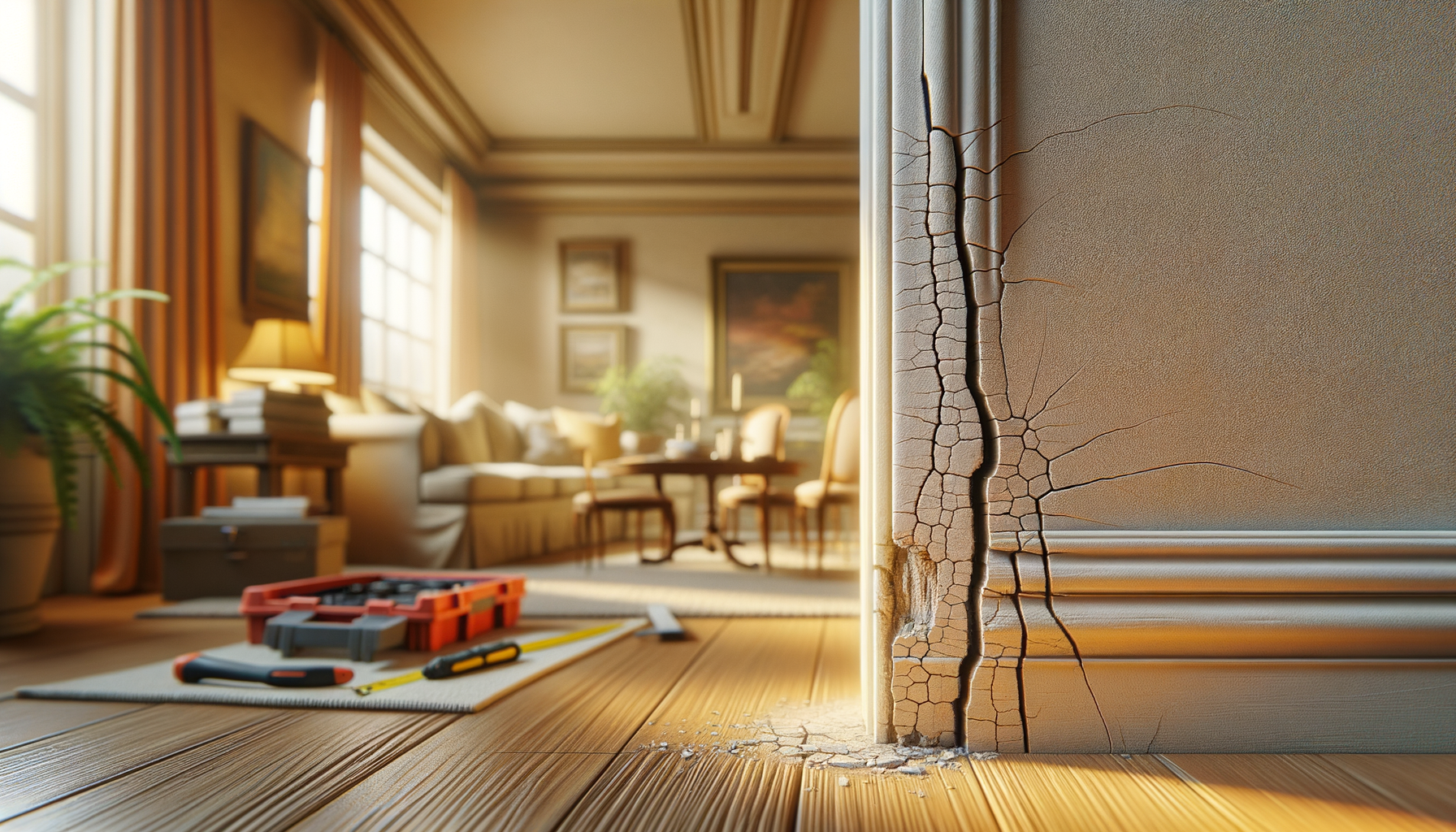What Are Drywall Cracks?
Drywall cracks are little splits or breaks that show up on your walls or ceilings. You might see them near doors, windows, or corners of rooms.
- Definition: Drywall cracks are gaps in the drywall material. They can be small at first but may get bigger.
- Common Places: Cracks often appear around doors, windows, and corners and where pieces of drywall meet.
Causes of Drywall Cracks
Knowing why drywall cracks form can help you stop them or fix them.
-
Foundation Movement
- Settlement: In new homes, the foundation can move, putting stress on the drywall.
- Shifting: Changes in the ground, like soil erosion or earthquakes, can cause cracks.
-
Temperature and Humidity Changes
- Expansion and Contraction: Materials change size with temperature changes, which stresses drywall.
- Weather Fluctuations: Sudden weather changes can make it worse, especially in extreme climates.
-
Poor Installation
- Improper Taping and Mudding: If tape and joint compound are not applied well, seams can crack.
- Low-Quality Materials: Cheap materials are more likely to crack.
-
Natural Wear and Tear
- Aging of the Building: Over time, buildings naturally get older and wear out.
- Regular Use: Everyday use and small accidents can damage drywall.
Identifying Different Types of Drywall Cracks
Different cracks can tell you different things about your walls.
-
Hairline Cracks
- Characteristics: Very thin and often look like webs.
- Common Places: Near doors, windows, and corners.
-
Vertical and Horizontal Cracks
- Differences: Vertical cracks usually mean settlement issues, while horizontal cracks can suggest major structural problems.
- What They Indicate: They can mean foundation or settlement problems.
-
Diagonal Cracks
- Caused by Foundation Issues: Diagonal cracks often mean the foundation is moving unevenly.
-
Stair-Step Cracks
- Brick or Block Foundations: These cracks follow the lines in brick or block and suggest serious foundation problems.
How to Prevent Drywall Cracks
To keep your home free from cracks, try these tips.
-
Maintain Consistent Indoor Humidity
- Use Dehumidifiers or Humidifiers: Keep indoor air balanced to prevent stress on the drywall.
-
Proper Home Maintenance
- Regular Inspections: Check your home often for signs of cracks.
- Fixing Small Issues: Repair small cracks quickly so they don’t get worse.
-
Quality Construction Practices
- Hiring Reputable Contractors: Make sure professionals do any work on your home.
- Using Proper Materials: Choose high-quality and suitable materials for your climate.
Steps to Fix Drywall Cracks
If you already have cracks, you can follow these steps to fix them:
-
Gather Your Materials
- You’ll need: spackling or joint compound, sandpaper, a putty knife, paint, primer, and a cloth.
-
Prepare the Area
- Clean the crack and the area around it.
-
Fill the Crack
- Use the putty knife to apply spackling or joint compound into the crack. For bigger cracks, use mesh tape.
-
Sand and Smooth
- When the compound is dry, sand it until it’s smooth.
-
Prime and Paint
- Apply primer first, then paint to match the wall.
When to Call a Professional
Sometimes you might need a professional to help.
-
Larger Cracks
- Structural Concerns: Big or many cracks can mean serious structural problems.
-
Recurring Cracks
- Persistent Issues: If cracks keep returning, there may be a bigger issue.
-
Foundation Problems
- Signs to Watch For: If you see stair-step or severe diagonal cracks, call a foundation expert.
Additional Tips and Resources
Keeping your home in good shape takes continuous care.
-
Regular Inspections
- Create a schedule and checklist to look for potential issues early.
-
Seasonal Maintenance
- Adjust inspections and repairs based on the season.
-
Helpful Resources
- Check websites and videos for more information on drywall repairs. Use good materials and find reliable contractors if needed.
By following these tips, you can manage drywall cracks and keep your home looking nice and strong.


Leave a Reply